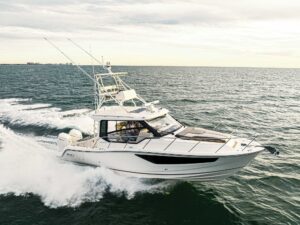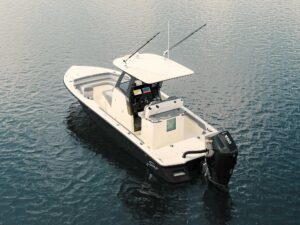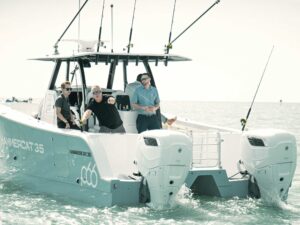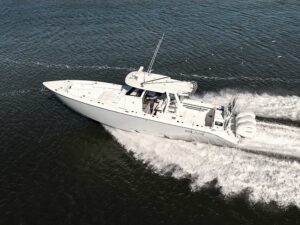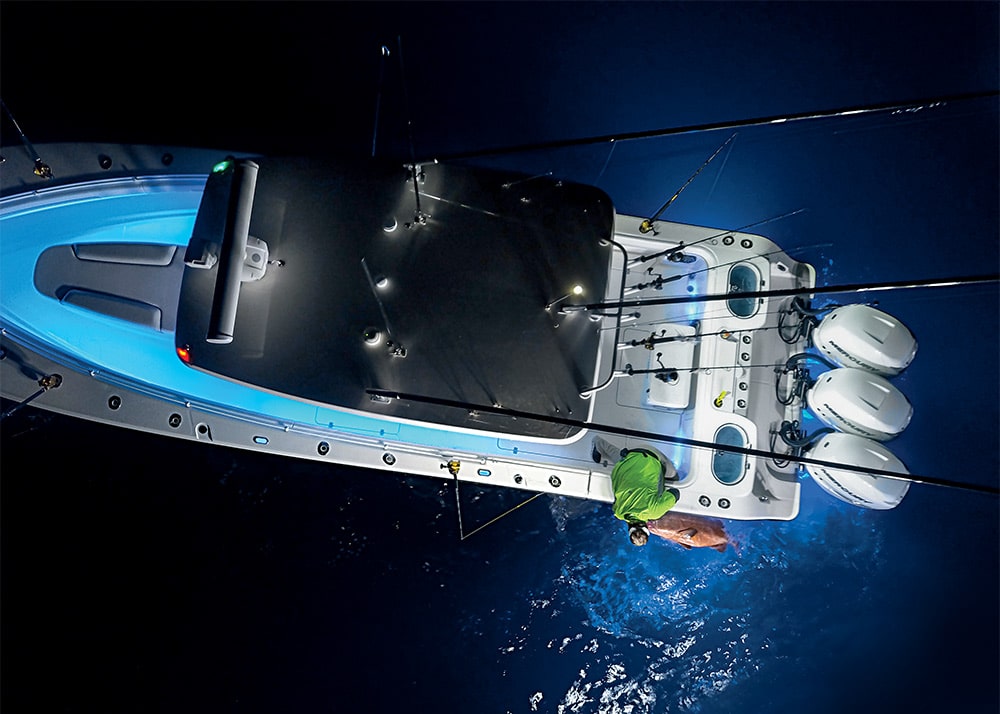
The proliferation of large center-consoles now taking to the sea — tricked-out twin-, triple- and quad-powered boats mostly between 28 and 45 feet — represent the ultimate and most versatile offshore fishing platforms to date. They deliver speed (read: more fishing time), efficiency (versus large sport-fishing yachts), and even practicality (full crew not required, just you and a fishing buddy).
Center-consoles reflect the distinctive fishing styles of their owners. And because customizations range from basic to highly advanced, the process generates a lot of questions among those looking to step up into this class; one specific setup certainly won’t please everyone. Here are some considerations when tricking out a center-console for big-game fishing.
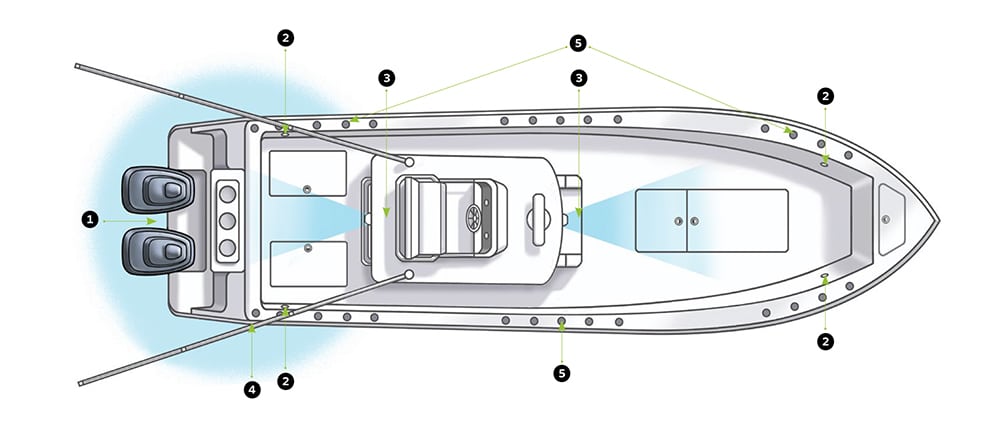
Layout The main advantage of a center-console is unobstructed 360-degree walk-around space. Anglers should be able to cast and fight fish from any section of the boat, as well as reach out beyond the outboards when playing a fish or drifting baits, without interference. Outriggers should be T-top-mounted with their halyards affixed to T-top stanchions when deployed, not the gunwales. Ditto with weather enclosure wings that attach to the gunwales; they’re fine when underway in rough seas, but clear them before fishing.
As surprising as it may seem, some center-consoles lack adequate-size fish boxes and capable livewells. Tuna, wahoo and large dolphin must fit wholly inside insulated boxes, not laid on deck and blanketed with wet towels. Regarding the latter, and in addition to properly keeping a large tuna or a few additional fish when the boxes are filled, an insulated fish bag is a must-have item.
My 33-foot center-console features two large in-deck fish boxes. Just forward of these and flanking my console sit two smaller insulated holds, which could easily double as storage for bottomfish. And then there’s the forward coffin box and large hold underneath. Granted, I don’t keep more fish than we can eat fresh within a week, so the aft fish boxes are more than adequate for my take-home needs. However, factor in all of the above, and the boat can hold plenty of offshore fish immersed in ice. Fish boxes and forward coffin boxes, incidentally, should drain via macerator pumps, which prevent clogs by grinding up pieces of bait or fish.
Livewells Offshore live-baiting is serious business, encompassing live-chumming for tuna as well as the keeping of big baits such as bluefish, mackerel, bonito, bull mullet and dolphin for those large bluefins, yellowfins, sharks and marlin.
Livewells should be round or oval, with a constant water feed from the bottom flowing upward for maximum oxygen and consistent water temperature. Tuna tubes are options for keeping large individual baits alive. Also, powerful sea-chest-style pumping systems provide the necessary water flow for tube-housed and livewell baits. A sea chest, basically a box housing submerged livewell pumps, eliminates bait die-offs from pumps losing their prime and air-locking, common problems associated with many stock non-sea-chest-style livewells.
On my new 334 Mako, I opted for a Hooker Electric sea chest fueled by twin 4,500 gph pumps. The unit supplies two 34-gallon livewells with a constant water flow, with volume controlled by a dial on the console. It was plumbed to push water in from the bottom or top. Water flow can be precisely governed based on bait type. That is, more turnover for larger, oxygen-dependent baits, or a slower feed for more flow-sensitive baits.
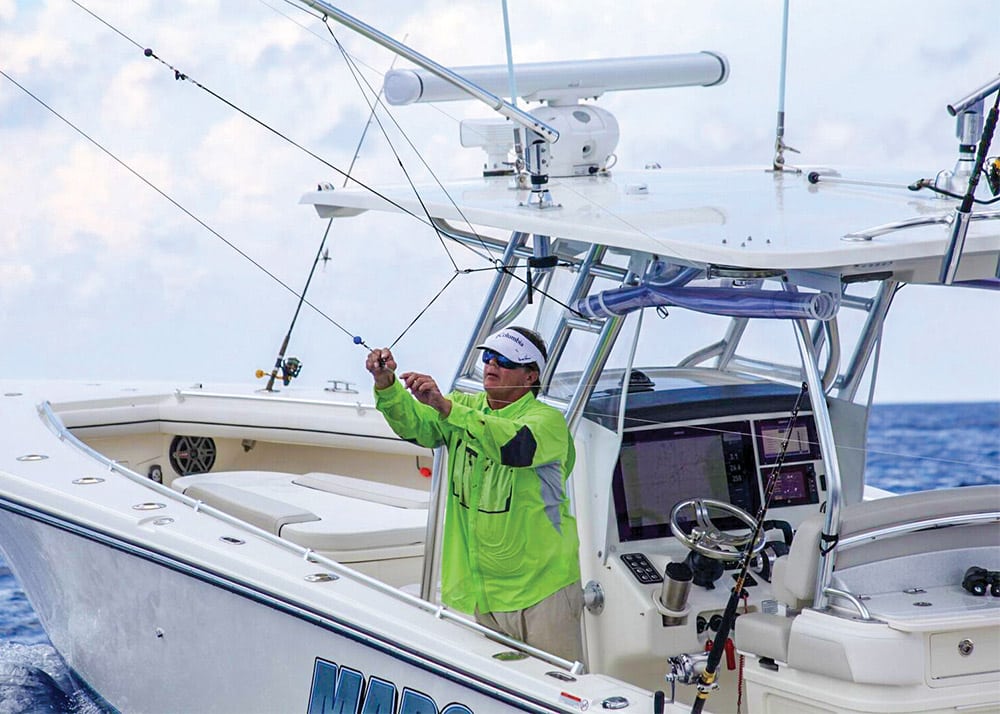
Set the Spread Outriggers spread out the baits, allowing us to create fish-attracting illusions with the trolling spread over a much greater swath of water. It’s an art taken seriously by accomplished bluewater anglers.
Utilizing a pair of 18-foot carbon-fiber outriggers and a 15-foot carbon-fiber center rigger, I easily troll six baits. Add in a pair of flat lines, and that number jumps to eight. Each of the three carbon-fiber poles is rigged to troll two baits — a long- and short-outrigger bait per side — and on the center rigger, a close middle bait where the prop wash fades, and a way, way back bait. Carbon-fiber poles, incidentally, are lighter than standard aluminum poles. You can step up in length and gain more spread without adding additional stress to a T-top.
Teasers enhance baiting opportunities by luring fish near the transom. I have a pair of Elec-Tra-Mate Pancake 310 series Teezer Reels affixed to the underside of my T-top. These manual-retrieve reels are designed for center-consoles. Each teaser line runs through and exits near the tip of the pole. This way, port and starboard teasers can be trolled in the clean water off to the sides of the prop wash.
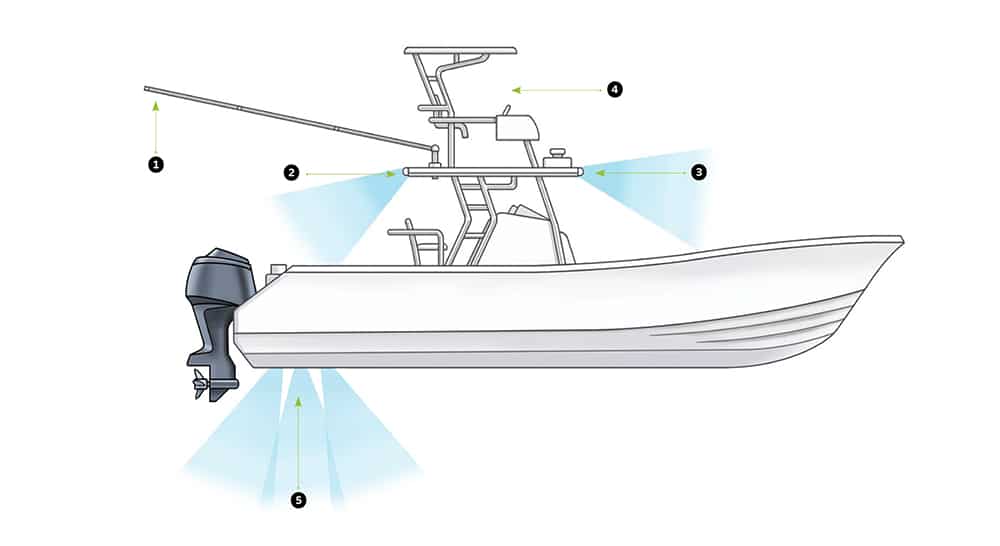
Vantage Point The higher the perch, the more ocean and fish you’ll see. Towers are integral on large center-consoles. On smaller offshore center-consoles, specific types of towers hinge on whether a boat will be dock-based or trailered.
Autopilot An autopilot, a worthy navigation aid, is a big help when setting out a trolling spread. Simply aim the boat straight and activate the autopilot — no more veering off course. Once the spread is set, deactivate it and work your trolling patterns.
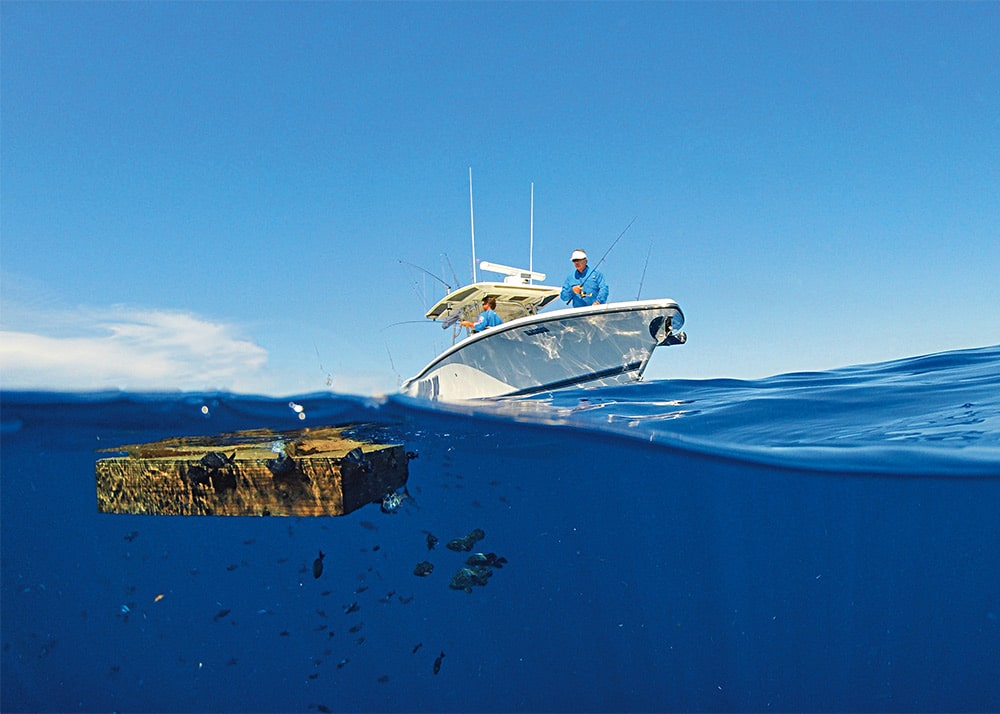
Rod Holders Rod-holder style and placement should support an angler’s style of fishing. For trolling, flat-line rod holders face aft at the transom. About 3 feet forward in the covering boards is a pair of Lee swivel rod holders (short outrigger rods), whereas another 2 feet beyond those is one more pair of swivel rod holders (long outrigger rods). One advantage of a swivel rod holder is adjustable rod angles, which prevent an arching rod and speeding line from contacting the outfit “downstrike” from it. Also, for maximum separation, adequately space and offset trolling rod holders. As for my two center-rigger rods, they ride in midtransom holders.
For drifting, whether for sailfish or tuna, I install swivel rod holders alongside the flat-line trolling holders, with a slight offset. From there, several more holders — a mix of straight and swivel versions aimed directly seaward — fill out the gunwales from the cockpit to the bow. Again, this supports our drifting efforts, including a second, bow-based kite station. In all, between trolling and drifting, Marc VI has 28 gunwale-based rod holders.
Electrical Outlets For deep-dropping, daytime swordfishing, kite-fishing, downrigger-fishing and even dredge-towing, a center-console without electrical outlets is anything but serious. Marc VI has four 30-amp, 12-volt outlets — in the cockpit and bow, to both port and starboard. This powers our electric kite reels and Hooker Electric Penn Reel drives for daytime swordfishing.
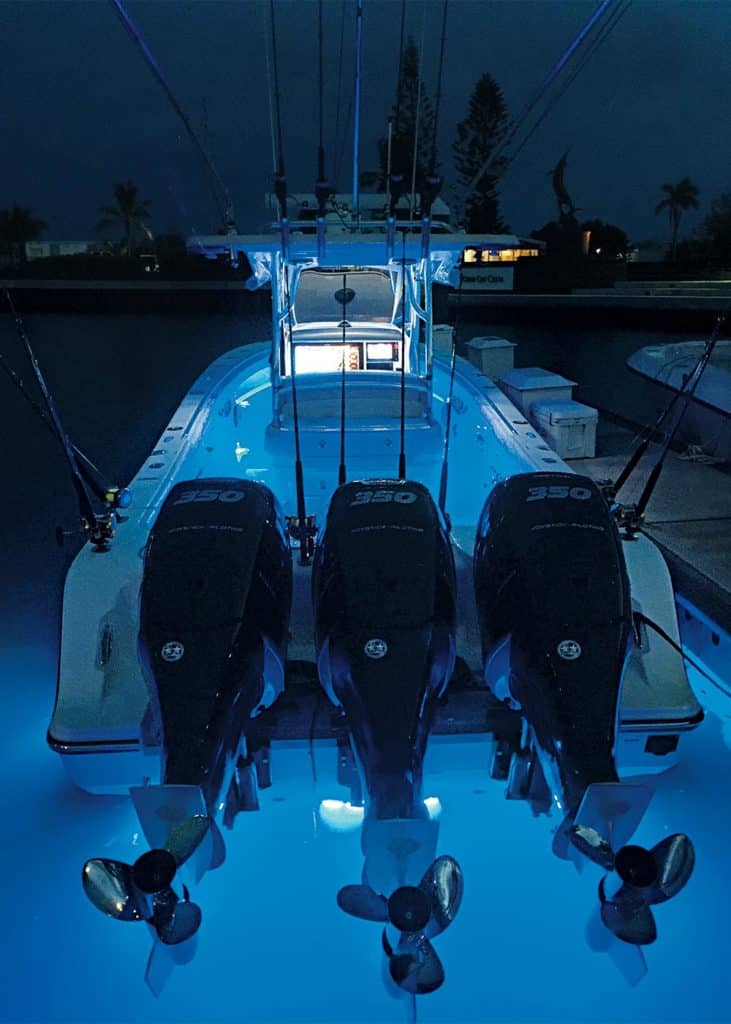
Electronics Center-consoles are capable of supporting the most advanced electronics for navigation and fish-finding. Dual-frequency chirp transducers easily provide crisp, concise bottom readings for day-swording, tile fishing, and canyon trolling and chunking — providing the right transducer is paired with the machine, and a through-hull is mounted.
Chirp technology, incidentally, provides up to 30 percent more clarity and definition over standard transducers. Plus, it enables fine-tuning or tweaking of high and low frequencies for even more precise definitions of specific bottom, as well as better bait and game-fish separations. For example, if you wish to fine-tune outside the typical 200 kHz (shallow water) or 50 kHz (deep water) frequencies, chirp enables you to dial in a range from 28 kHz (for ultra-deep fishing, like in trenches and canyons) to 210 kHz (for shallow-water work).
To help fine-tune this accuracy, electronically displayed charts depict bottom contours and features. For a visual picture of areas covered, the boat trail can be activated on the map. And though a major safety asset, radar is also commonly used to locate birds, which often lead to game fish.
Satellite weather service provides yet another level of safety and confidence, by showing the size and intensity of any rain or squalls, lightning and wind. Astute anglers avoid getting caught in a squall and discover escape routes around or through storms. Marc VI is outfitted with a Simrad package featuring 24- and 9-inch Evo3 touchscreen units, powered by a BSM-3 Broadband CHIRP Echo Sounder that’s capable of reading depths to 10,000 feet. There’s also StructureScan 3D, powered by its own transducer. A Halo 4 pulse-compression radar with 4-foot open-array antenna, with Bird Mode, and two VHF radios, each on their own antenna, round out the electronics.
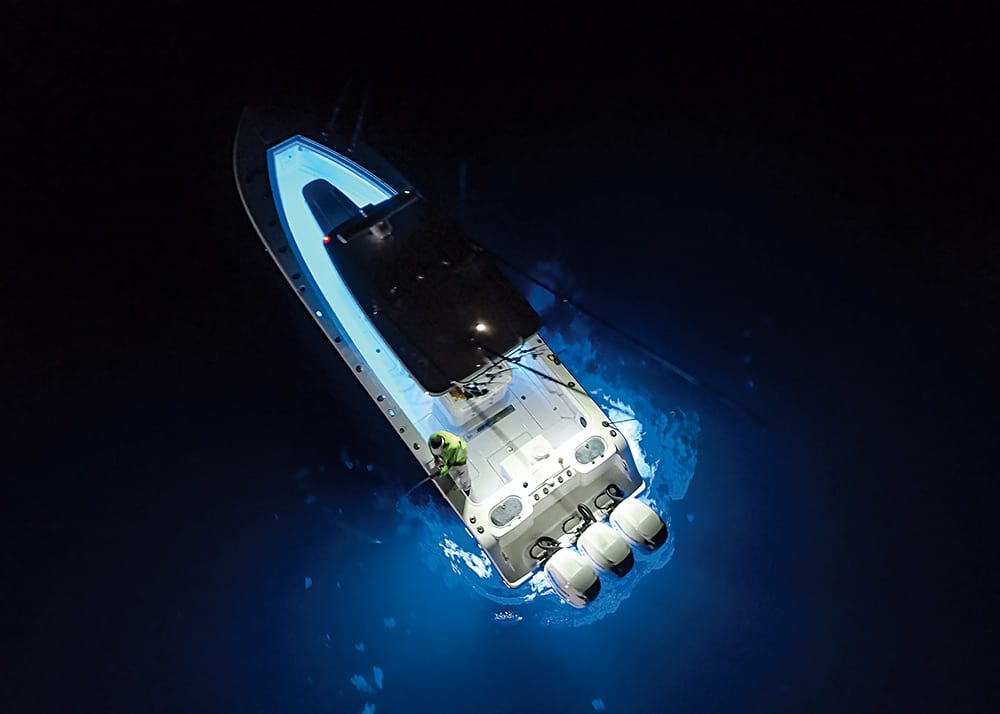
Tune Up! Offshore center-consoles are great for jamming out the tunes too. Marc VI features a JL Audio system, balanced from bow to stern. Classic rock never sounded so good!Night Lights
LED fishing lights are in vogue on big center-consoles for attracting bait and game fish and looking snazzy at the marina. Marc VI is outfitted with eight Shadow Caster Marine LED lights — four 6-inch units on the transom, and two 6-inch units affixed to both the aft port and starboard sides. Colors include Bimini Blue, Ultra Blue, Great White, Aqua Green and Cool Red. They draw a mere 2.1 amps at 12 volts.
T-top lights, which illuminate both the cockpit and bow areas, are a must for big-game center-consoles, since night-fishing excursions as well as runs during the wee hours of the morning and after sunset are commonplace. In these situations, low-voltage-drawing LED lights help when rigging tackle, chunking,and fighting and landing fish.
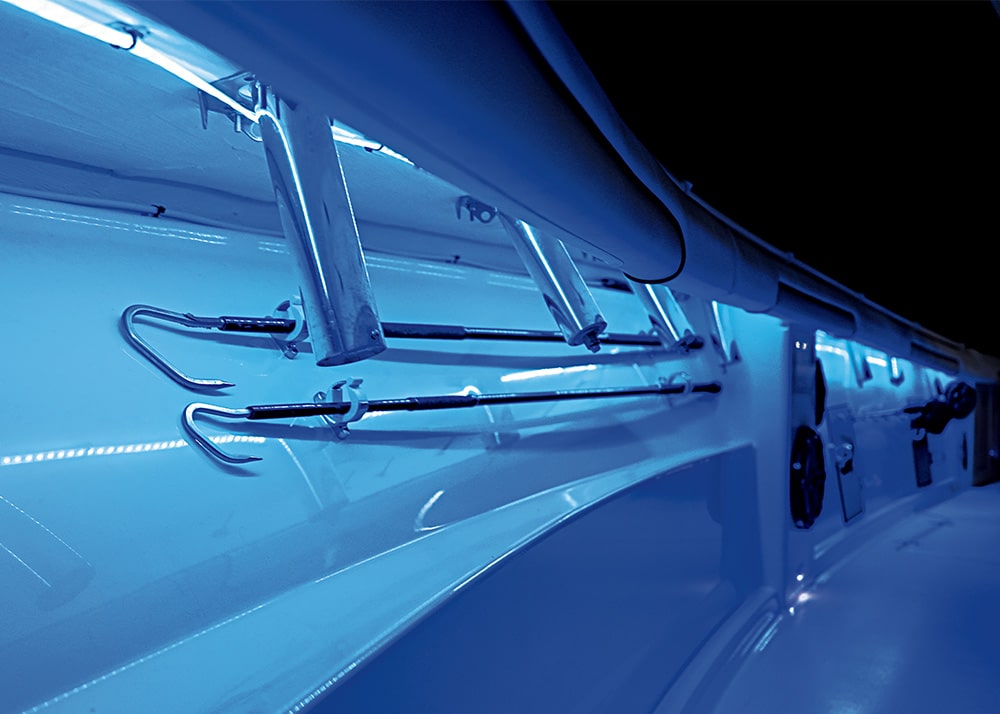
Gaffs Gaffs in assorted sizes should be stowed out of the way for passenger safety yet handy to reach. I carry two 6-foot-long gaffs — 2- and 3-inch hooks — and one 8-footer with a 4-inch hook stowed under the forward covering boards. Each is held in place by rod-hanger mounts.
Safety First I believe boats should come standard with an EPIRB. Marc VI has — within fast reach — an ACR GlobalFix Pro with internal GPS.
Read Next: Big Game Fishing on Small Boats
For night travel or long runs offshore, I carry a few ACR ResQLink PLBs (personal locator beacons) that I give to the crew; these are integrated-signal GPS units that combine 406 MHz satellite signals and 121.5 MHz homing signals. Should an overboard incident occur, the individual’s position will be quickly and accurately defined.
Also, for night runs, a T-top-mounted ACR halogen light illuminates my path, an added safeguard for avoiding dangerous debris the likes of boards, trees and floating obstacles.

